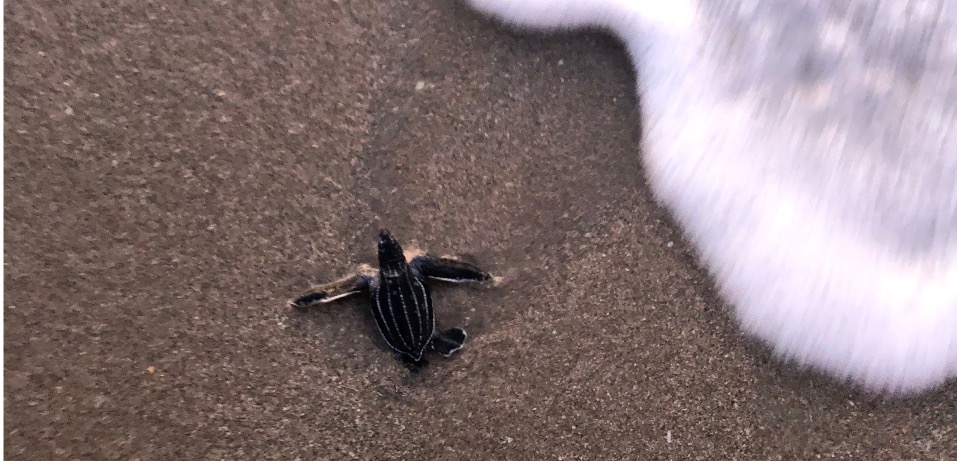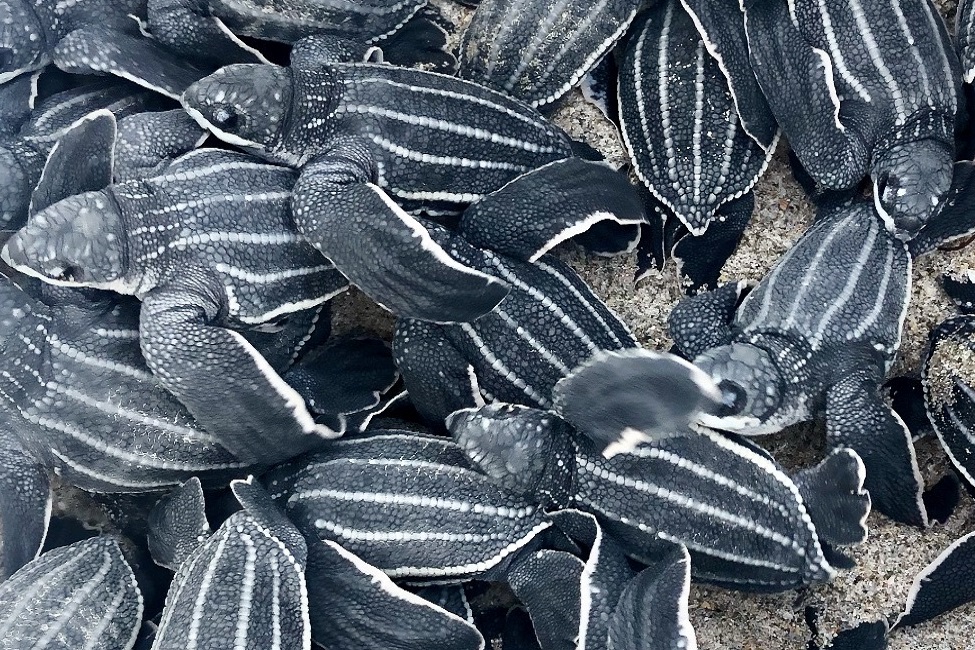
Author: Alex Hoey
Date: February 19, 2024
Many characteristics set leatherbacks apart from the other six sea turtle species: their pliable and leathery shell, their entirely open-ocean lifestyle, and their exclusively gelatinous diet. (Imagine a life with only Jell-o!) However, just like all sea turtles, leatherback hatchlings must make the journey of a lifetime, crawling from their sandy nests on the beach to the ocean, in a race against predation and sunrise. In a recent study, Heather Seaman, now a Ph.D. candidate advised by Dr. Sarah Milton, examined the relationship between leatherback nest incubation temperature and hatchling locomotive performance on land. Her goal was to answer a fundamental question. Does that temperature influence hatchling body form and the hatchling’s ability to crawl with sufficient speed toward the sea?
Seaman and Milton used hatchlings sampled from 12 leatherback nests laid between March and June of 2019, at Juno Beach, for their study. Dataloggers in each nest recorded the temperature every 30 minutes for the entire incubation period. Once the hatchlings emerged, each individual’s morphological features (its shell length, body depth, and flipper length) were measured. Its locomotor performance was evaluated based upon its crawling speed over a certain distance, and its ability to right itself by flipping over, after being placed on its back (an essential self-rescue technique!). Finally, three days after the hatchlings emerged from each nest, the nest itself was excavated to determine what proportion of the eggs produced hatchlings that left the nest. That measurement of “emergence success” was used to evaluate the quality of the eggs deposited by each female.
Temperature significantly influenced hatchling morphology. Nests that were exposed to lower temperatures (early- and mid-season nests) produced hatchlings that had longer flippers and longer bodies. In contrast, hotter incubation temperatures tended to produce hatchlings with shorter, but thicker, bodies.
Crawling speeds were not correlated with either differences in morphology or incubation temperatures, but righting ability was significantly correlated with both. Smaller and thicker hatchlings, from warmer late-season nest, struggled the most to right themselves.
Finally, leatherback emergence success at Juno Beach was about 37%, meaning that less than half of the deposited eggs ultimately produced hatchlings that left the nest. This proportion is low compared to the emergence success typical of green turtle and loggerhead nests incubating on the same beach. Leatherback emergence success did, however, show a seasonal pattern of change. Hatching success increased as mean nest temperatures approached 31°C during the middle of their nesting season but decreased as mean temperatures exceeded 31.5°C later in the season. Mid-season hatchlings also showed better locomotion. These results suggest that there may be a “sweet spot” (or optimal time period) for leatherback egg incubation.
As the climate continues to change, we may see fewer of these “sweet spot” incubation temperatures for leatherback populations, significantly impacting both the “success” of their nests as well as their ability to crawl at optimal speed toward the ocean.
